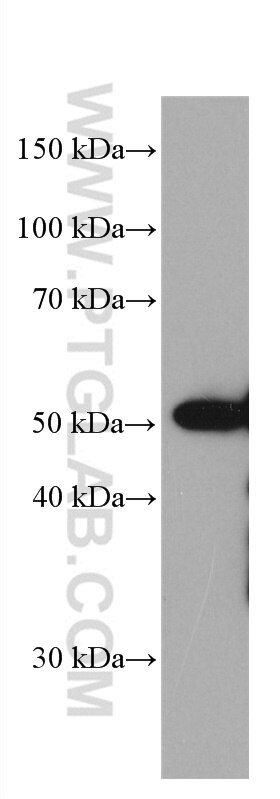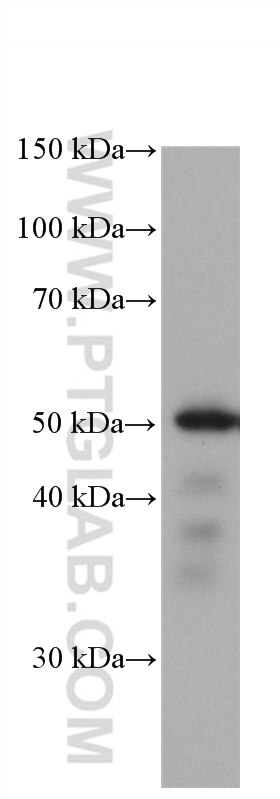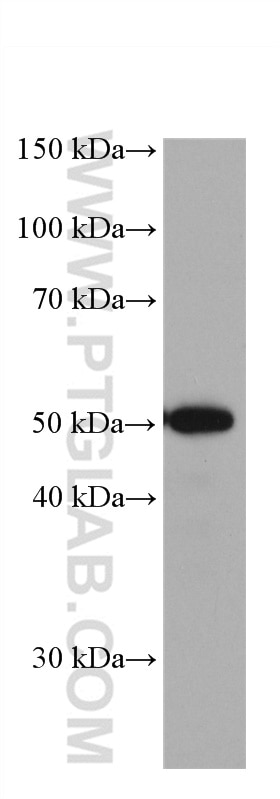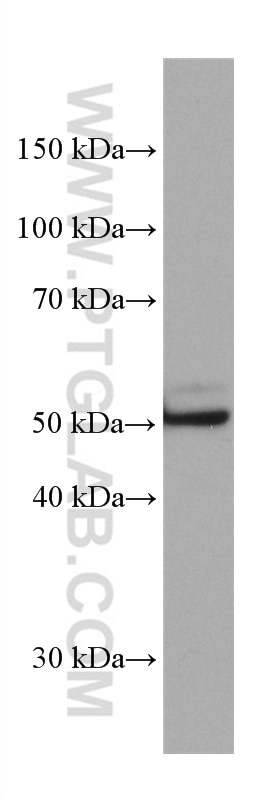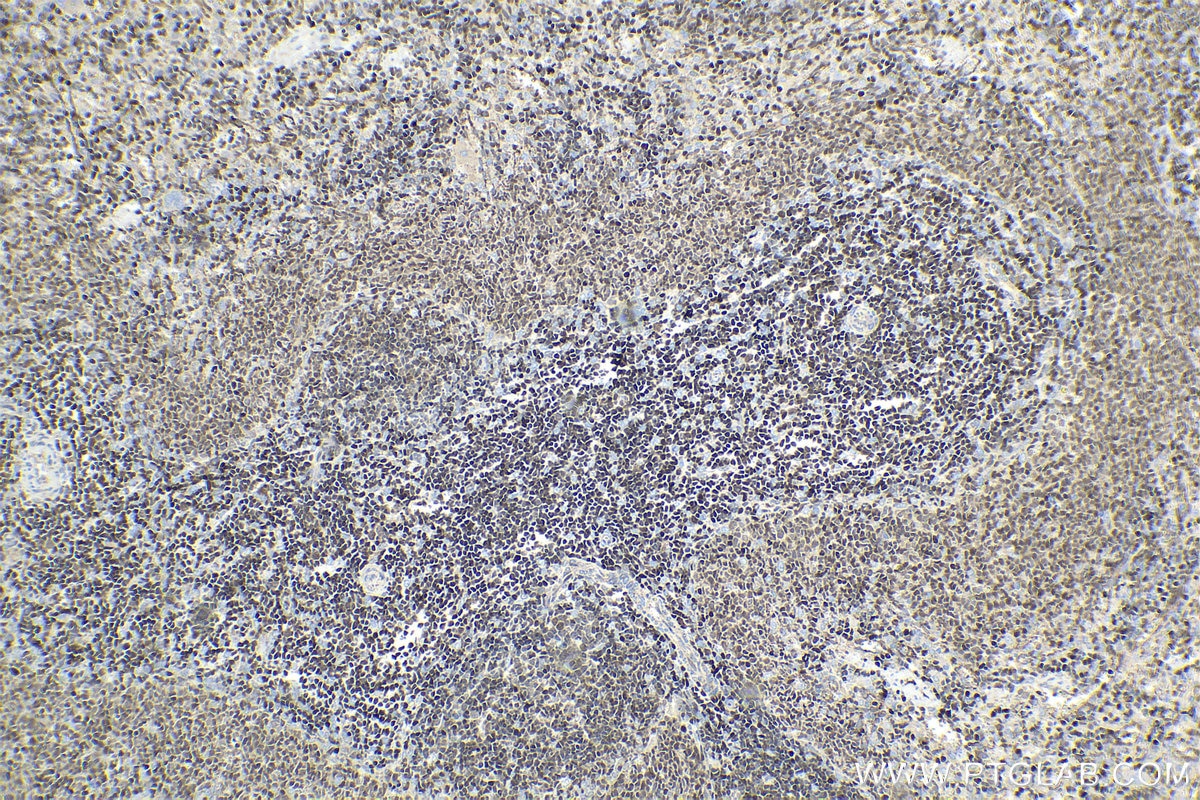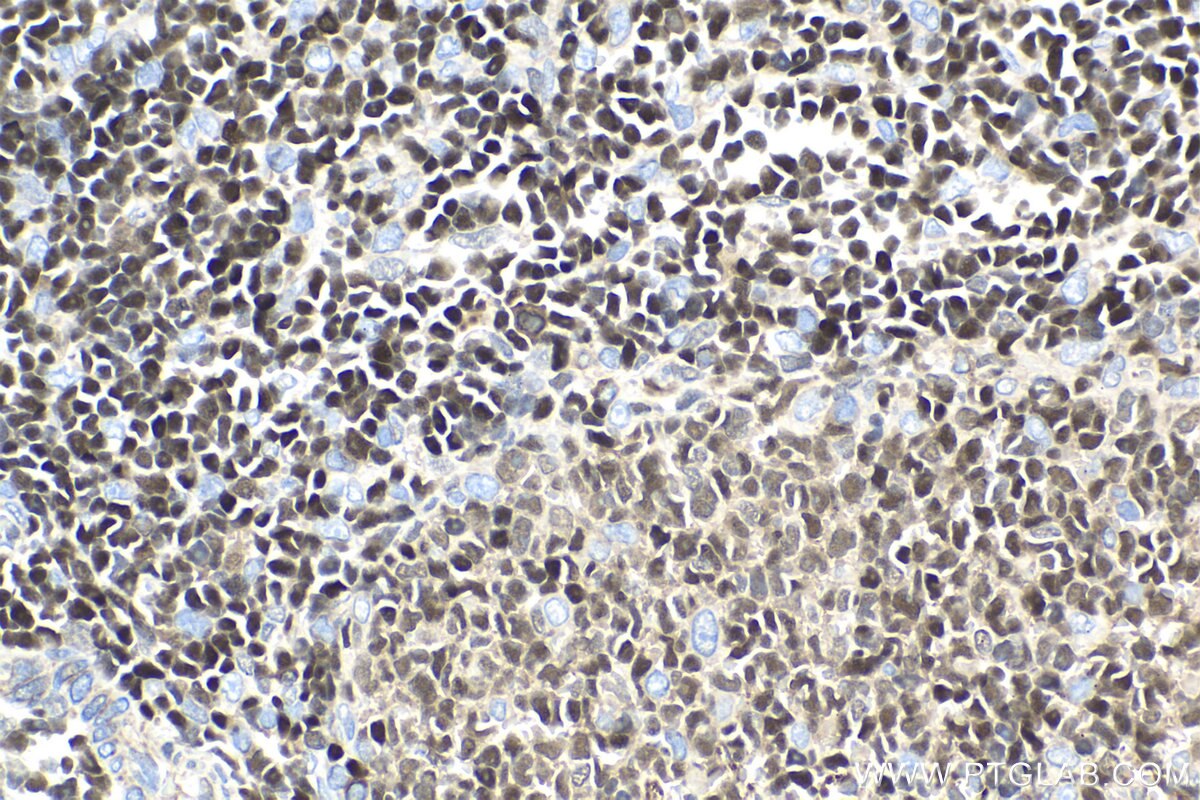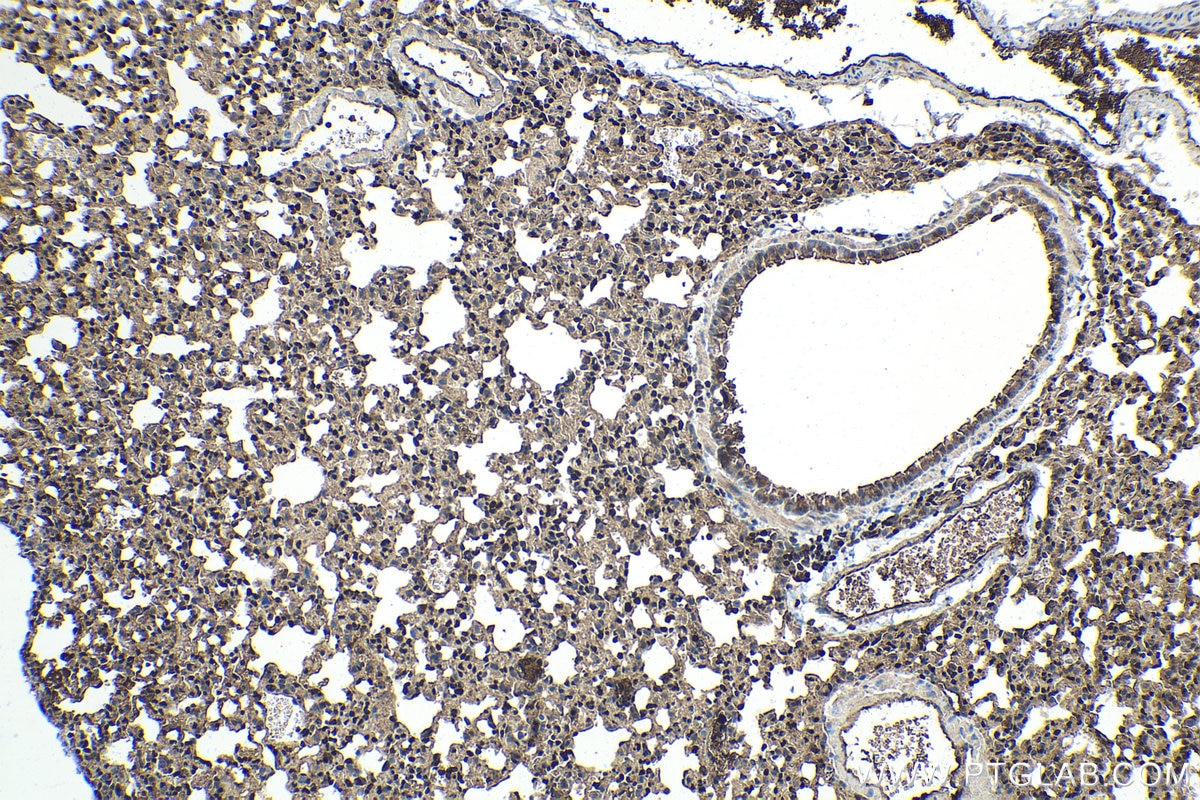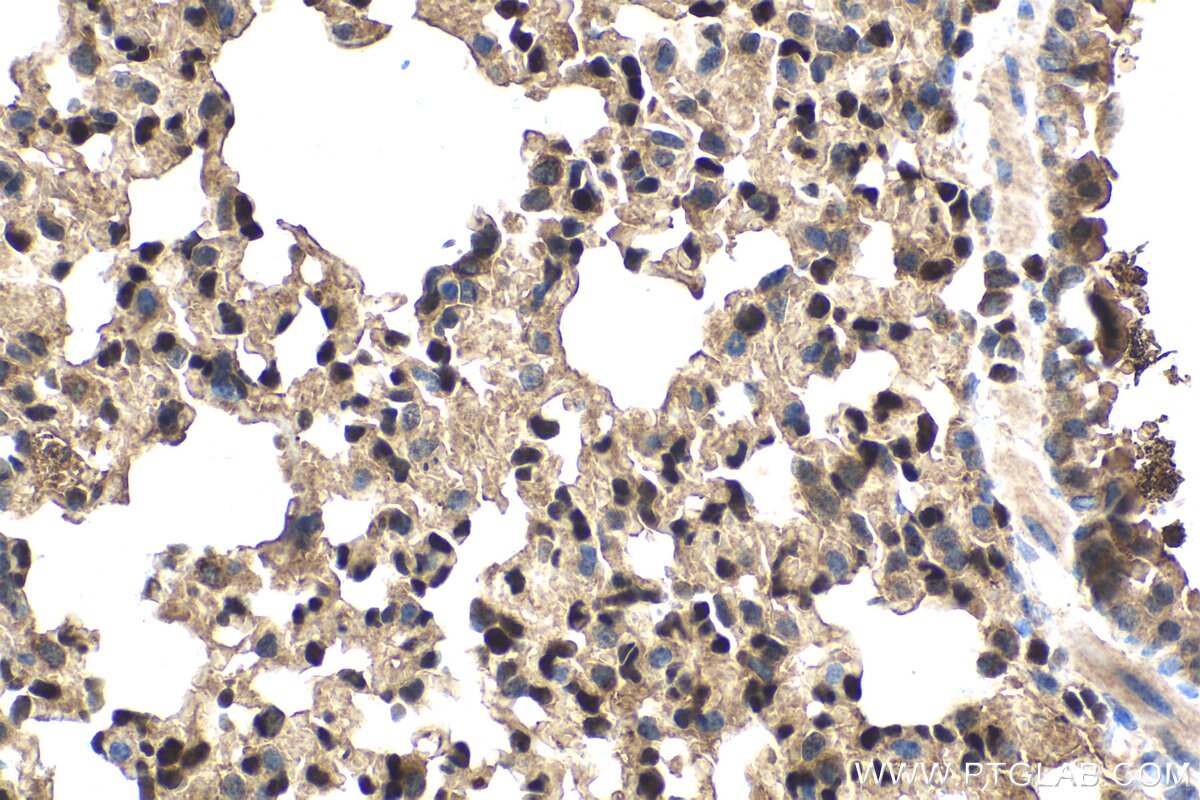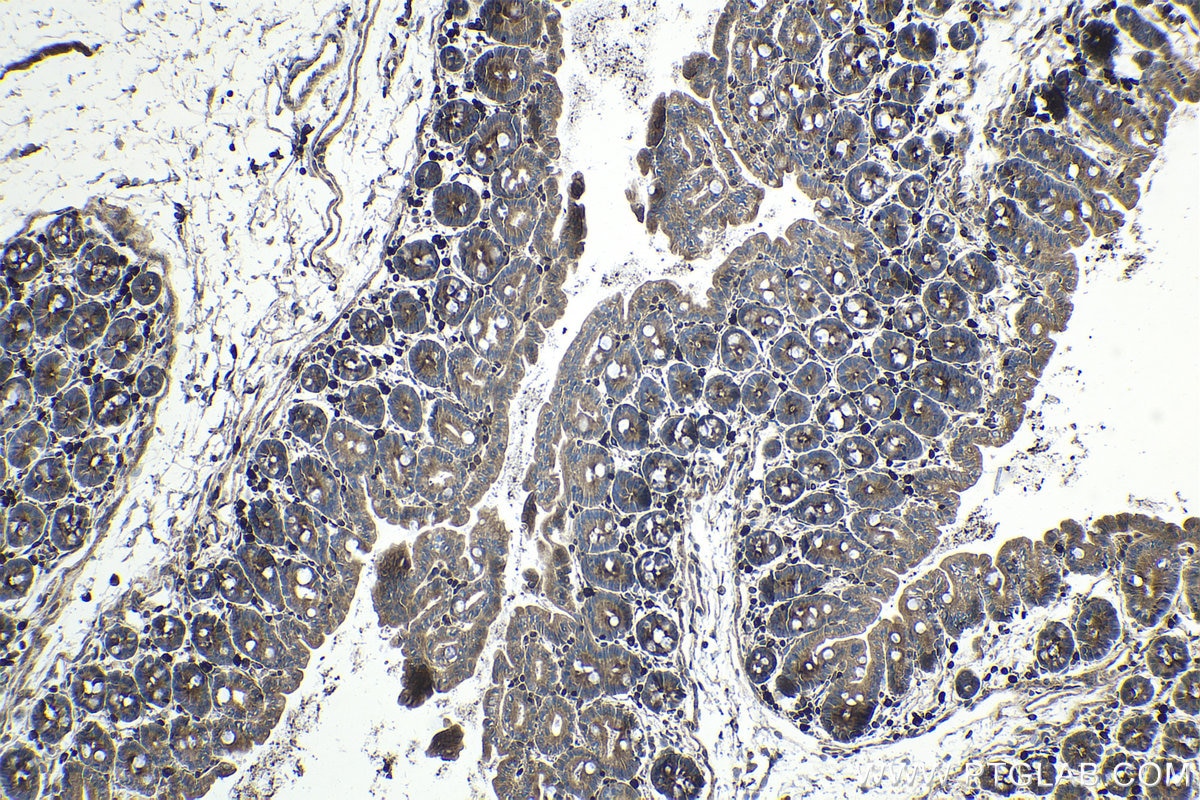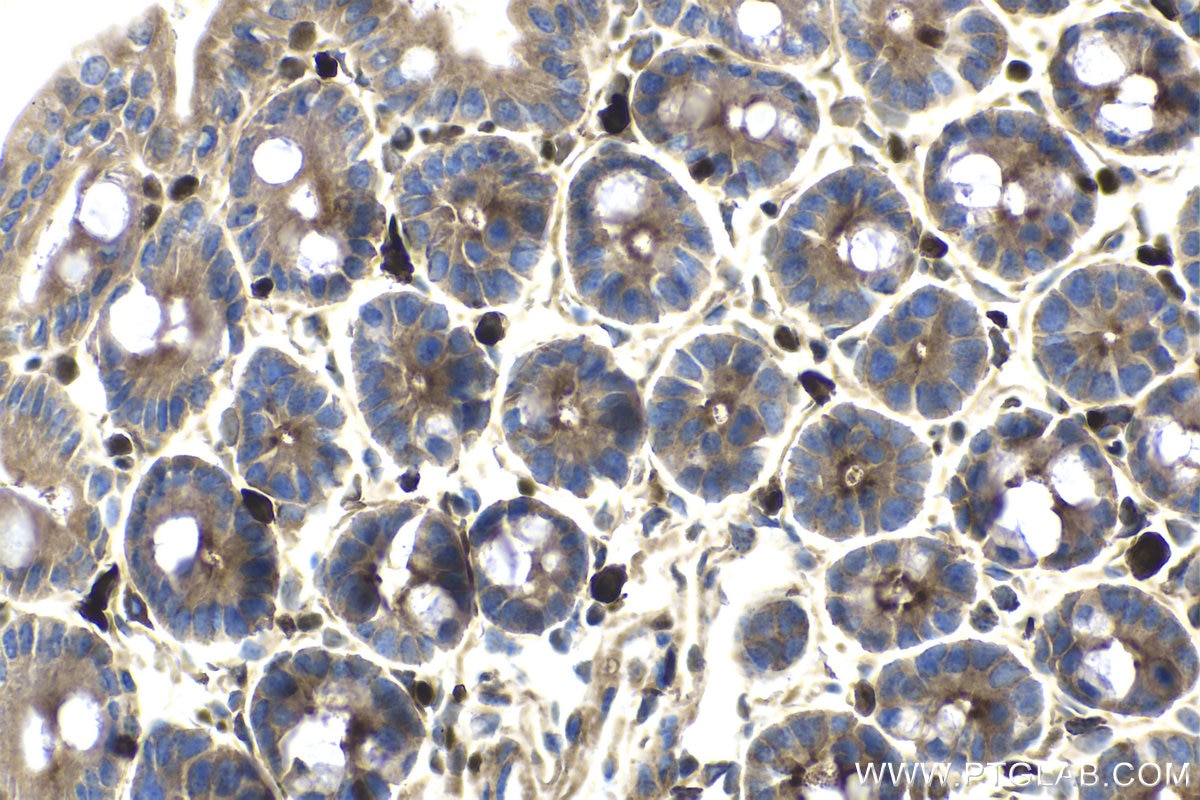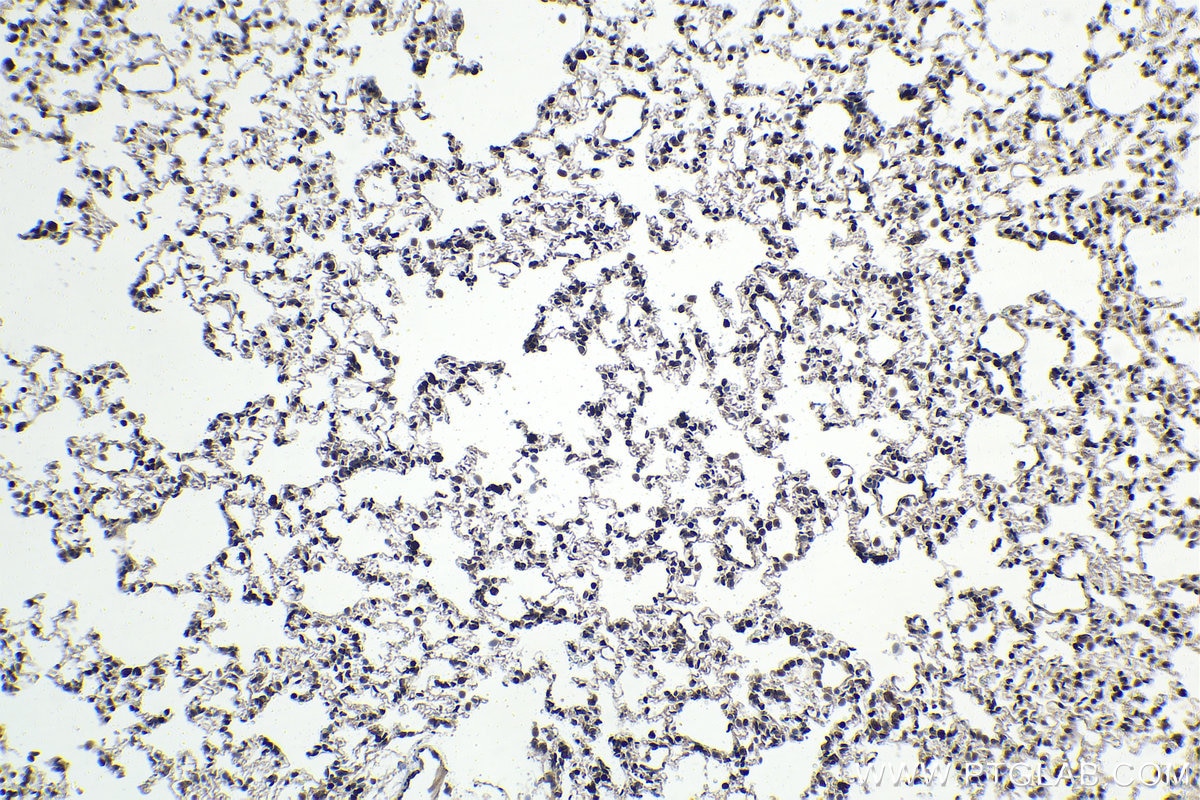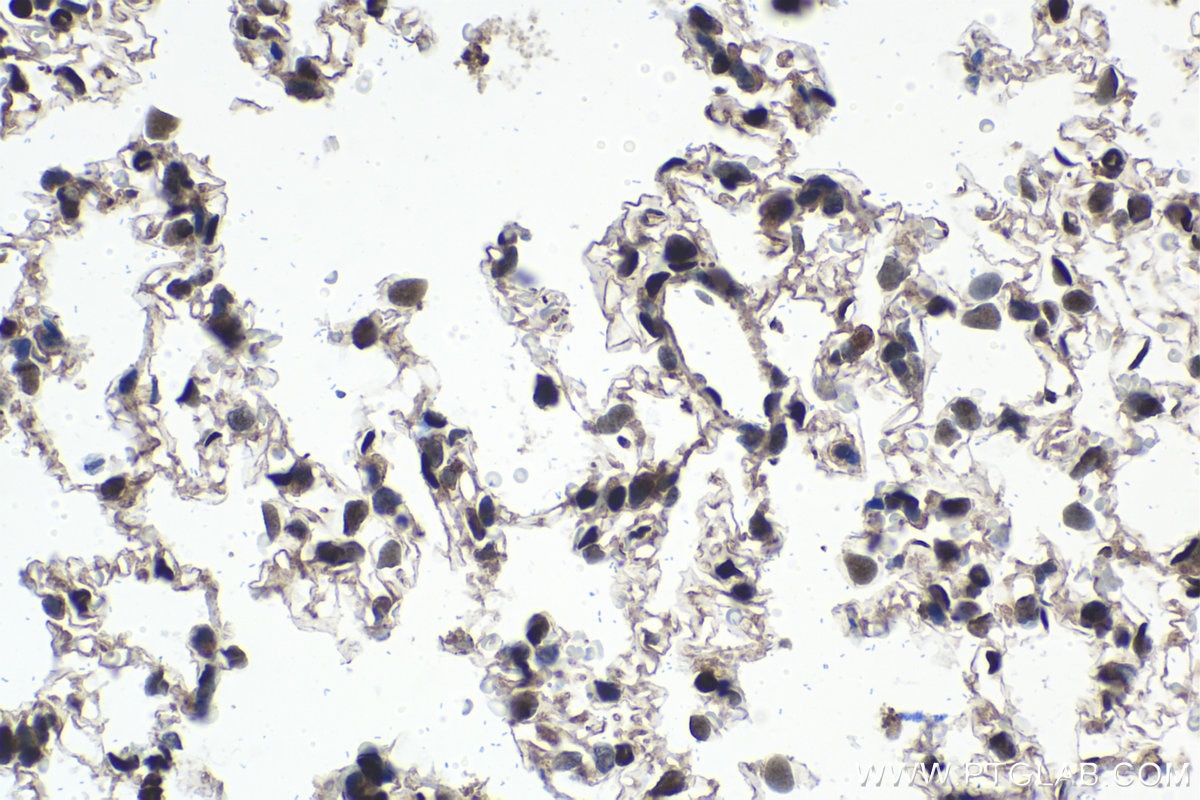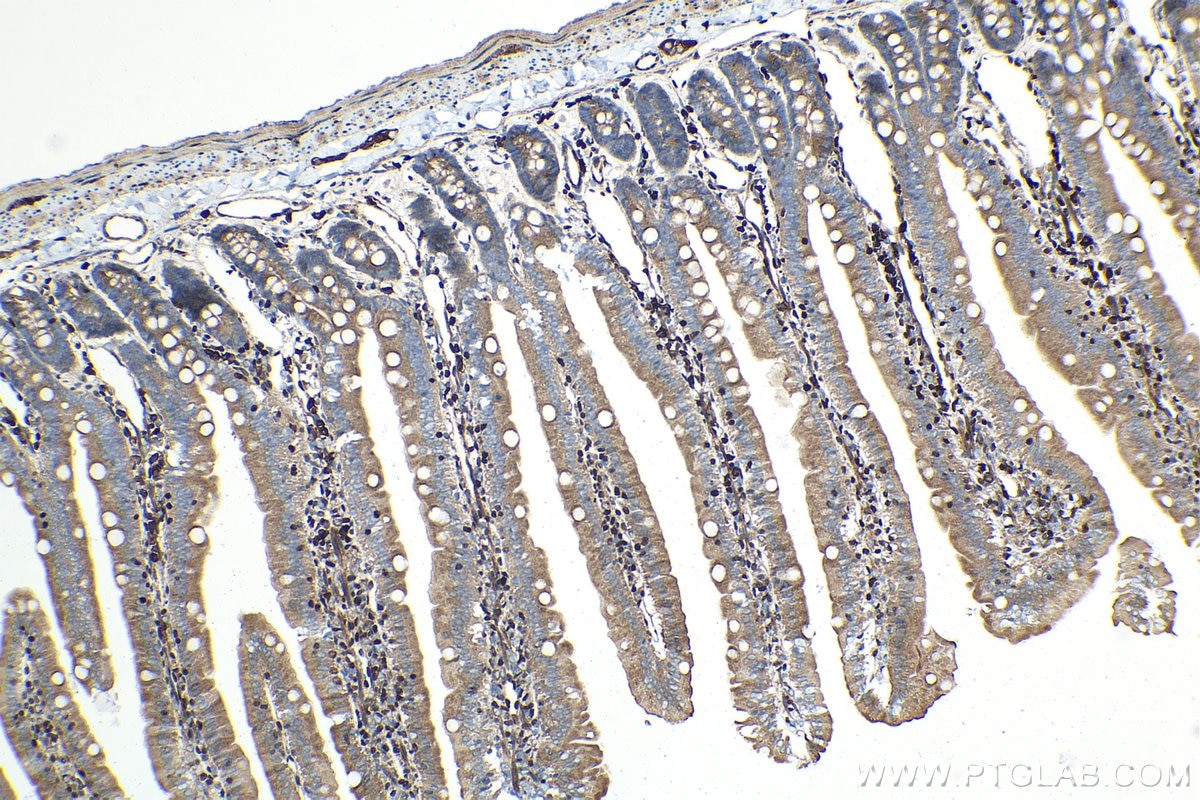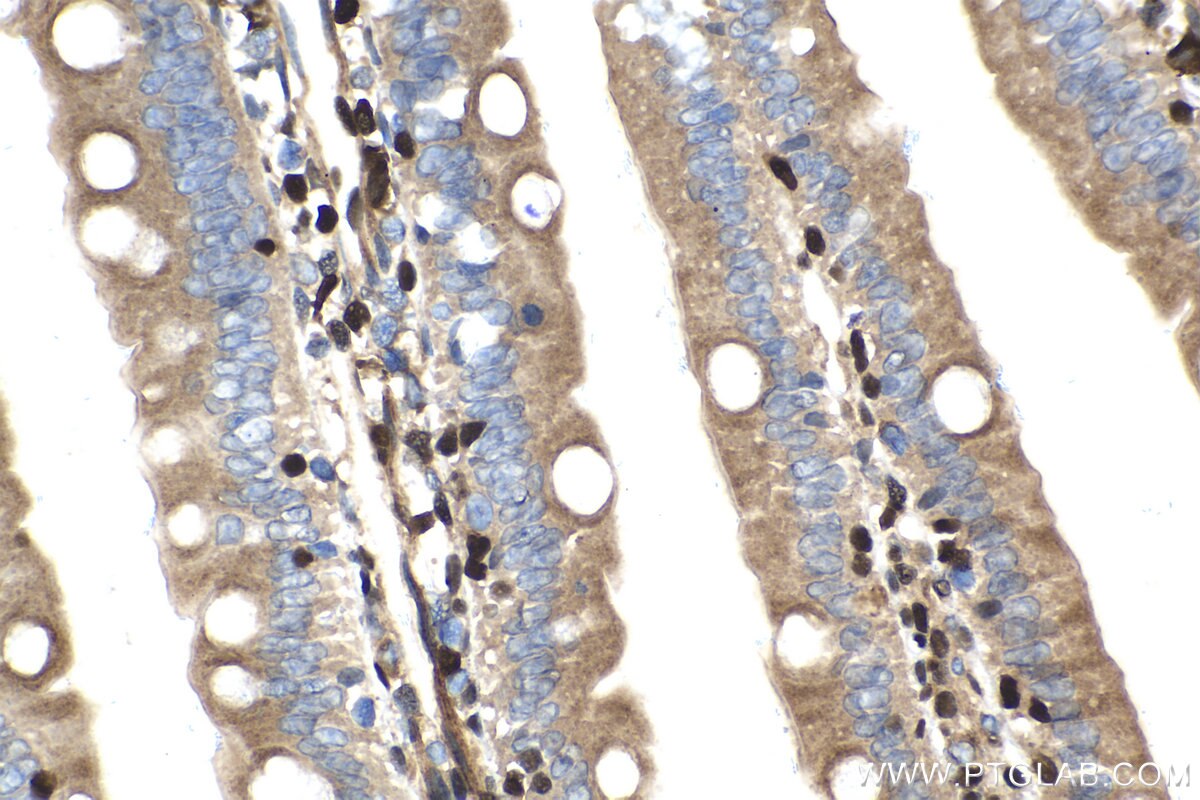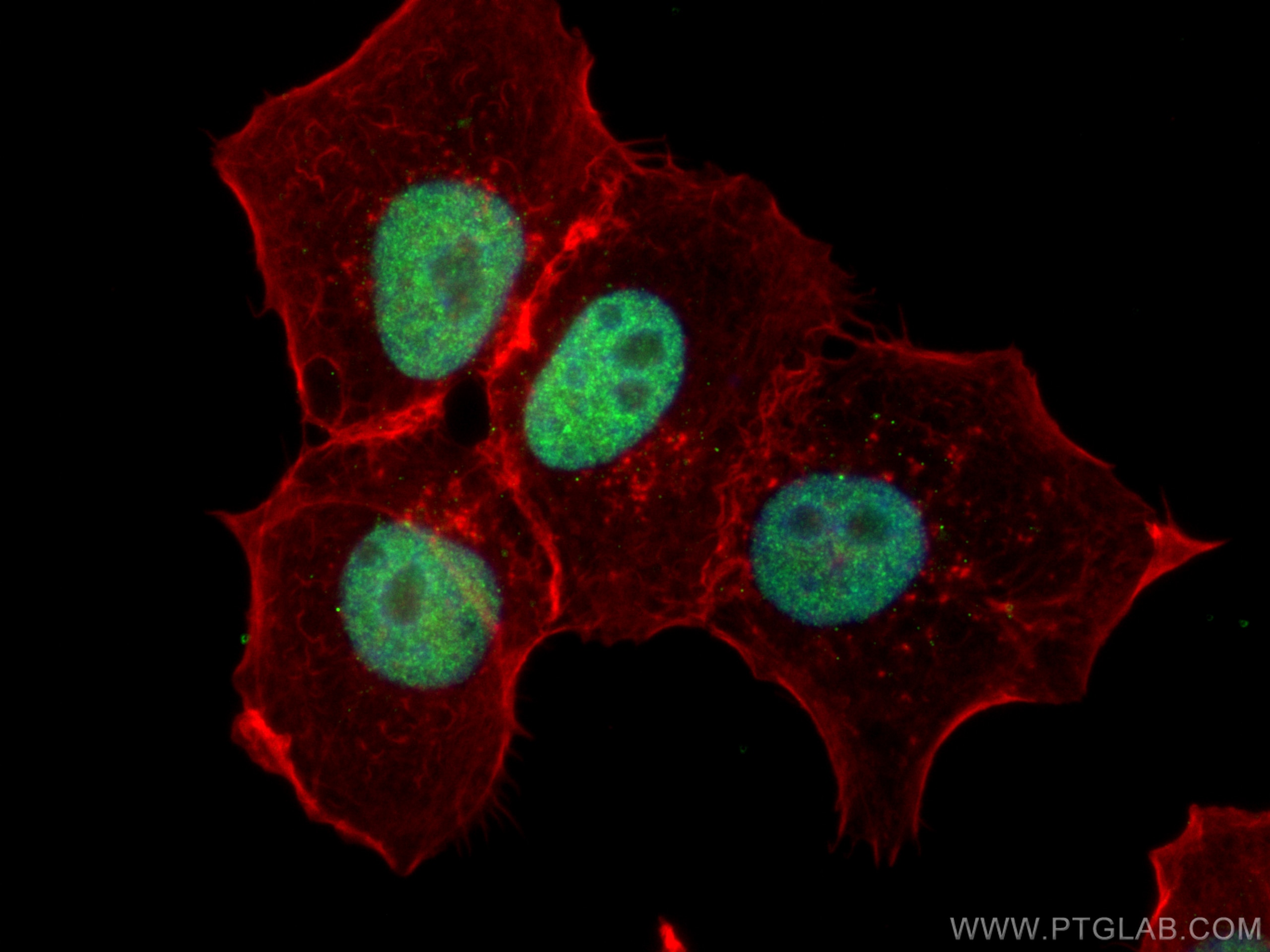- Phare
- Validé par KD/KO
Anticorps Monoclonal anti-ETS1
ETS1 Monoclonal Antibody for WB, IHC, IF/ICC, ELISA
Hôte / Isotype
Mouse / IgG2b
Réactivité testée
Humain, rat et plus (1)
Applications
WB, IHC, IF/ICC, ChIP, ELISA
Conjugaison
Non conjugué
CloneNo.
4F2D4
N° de cat : 66598-1-Ig
Synonymes
Galerie de données de validation
Applications testées
| Résultats positifs en WB | cellules HepG2, cellules Daudi, cellules HSCT6, cellules Jurkat |
| Résultats positifs en IHC | tissu splénique de rat, tissu d'intestin grêle de rat, tissu d'intestin grêle de souris, tissu pulmonaire de rat, tissu pulmonaire de souris il est suggéré de démasquer l'antigène avec un tampon de TE buffer pH 9.0; (*) À défaut, 'le démasquage de l'antigène peut être 'effectué avec un tampon citrate pH 6,0. |
| Résultats positifs en IF/ICC | cellules A431, |
Dilution recommandée
| Application | Dilution |
|---|---|
| Western Blot (WB) | WB : 1:2000-1:5000 |
| Immunohistochimie (IHC) | IHC : 1:1000-1:4000 |
| Immunofluorescence (IF)/ICC | IF/ICC : 1:400-1:1600 |
| It is recommended that this reagent should be titrated in each testing system to obtain optimal results. | |
| Sample-dependent, check data in validation data gallery | |
Applications publiées
| KD/KO | See 2 publications below |
| WB | See 6 publications below |
| IHC | See 2 publications below |
| ChIP | See 1 publications below |
Informations sur le produit
66598-1-Ig cible ETS1 dans les applications de WB, IHC, IF/ICC, ChIP, ELISA et montre une réactivité avec des échantillons Humain, rat
| Réactivité | Humain, rat |
| Réactivité citée | Humain, souris |
| Hôte / Isotype | Mouse / IgG2b |
| Clonalité | Monoclonal |
| Type | Anticorps |
| Immunogène | ETS1 Protéine recombinante Ag2127 |
| Nom complet | v-ets erythroblastosis virus E26 oncogene homolog 1 (avian) |
| Masse moléculaire calculée | 441 aa, 50 kDa |
| Poids moléculaire observé | 50 kDa |
| Numéro d’acquisition GenBank | BC017314 |
| Symbole du gène | ETS1 |
| Identification du gène (NCBI) | 2113 |
| Conjugaison | Non conjugué |
| Forme | Liquide |
| Méthode de purification | Purification par protéine A |
| Tampon de stockage | PBS with 0.02% sodium azide and 50% glycerol |
| Conditions de stockage | Stocker à -20°C. Stable pendant un an après l'expédition. L'aliquotage n'est pas nécessaire pour le stockage à -20oC Les 20ul contiennent 0,1% de BSA. |
Informations générales
ETS1 is a member of the ETS family of transcription factors, which are defined by the presence of a conserved ETS DNA-binding domain that recognizes the core consensus DNA sequence GGAA/T in target genes. ETS1 is a nuclear protein and primarily acts as a transcriptional activator, though it can also repress gene transcription. Since it is primarily expressed in lymphocytes, it plays several critical roles in immunity. In addition, it is important for angiogenesis. Since cells express several Ets proteins at the same time, functional redundancy is possible. This is particularly shown for the socalled housekeeping genes where several Ets factors were found to occupy the proximal promoters in vivo.
Protocole
| Product Specific Protocols | |
|---|---|
| WB protocol for ETS1 antibody 66598-1-Ig | Download protocol |
| IHC protocol for ETS1 antibody 66598-1-Ig | Download protocol |
| IF protocol for ETS1 antibody 66598-1-Ig | Download protocol |
| Standard Protocols | |
|---|---|
| Click here to view our Standard Protocols |
Publications
| Species | Application | Title |
|---|---|---|
Cell Death Dis PLA2G7 promotes immune evasion of bladder cancer through the JAK-STAT-PDL1 axis | ||
Mol Med ets1 associates with KMT5A to participate in high glucose-mediated EndMT via upregulation of PFN2 expression in diabetic nephropathy.
| ||
Blood Adv ETS1 is a novel transcriptional regulator of adult T-cell leukemia/lymphoma of North American descent | ||
Nat Microbiol FEAR antiviral response pathway is independent of interferons and countered by poxvirus proteins | ||
Int J Biol Sci ETS1-mediated Regulation of SOAT1 Enhances the Malignant Phenotype of Oral Squamous Cell Carcinoma and Induces Tumor-associated Macrophages M2-like Polarization | ||
Elife Neurons enhance blood-brain barrier function via upregulating claudin-5 and VE-cadherin expression due to glial cell line-derived neurotrophic factor secretion
|
